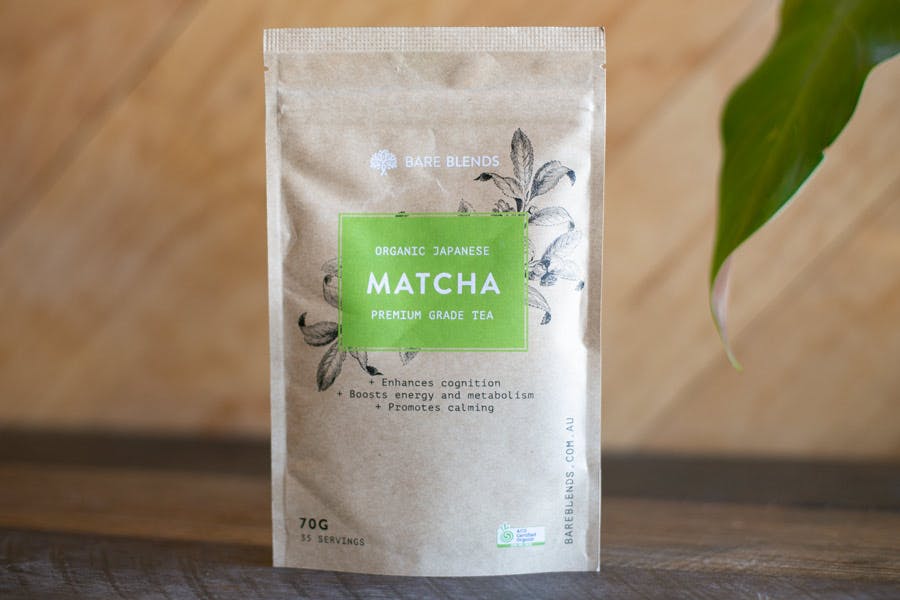Matcha: Artisanal Green Tea
We’ve all heard of matcha, but what makes it so popular, and are the acclaimed health benefits to be believed? Matcha is

Bare Blends
2014-12-30

We've all heard of matcha, but what makes it so popular, and are the acclaimed health benefits to be believed?
Matcha is a prized, emerald coloured tea powder produced from the hand picked, steamed and stone ground leaves of Camellia Sinensis, the common tea plant. This laborious method of production results in a fine powder full of immune-boosting catechins and antioxidants, that is ready to whisk into a delicate, creamy energising drink.
When you drink Matcha, you are not just drinking an extract of the water-soluble compounds, but the entire leaf! This provides over three times the phyto-nutrients that regular green tea does, and 137 times the antioxidants of regular green tea.

History
In the late 9th century Buddhist monks returned from trips to China, having sampled their tea powder, and resolved to grow it in Japan to help calm the mind and stay awake during meditations. By the 11th century, methods of producing tea powder had been refined in Japan and begun to see wide-spread consumption.
As the centuries marched on the tea powder inspired an almost religious reverence in both production and consumption with new methods arising for creating only the finest tasting green teas. From the 15th century, Matcha powder was used as cultural currency, with Samurai and Japanese upper classes holding ceremonies to advance social standing.
Health Benefits
Regular matcha consumption was said to be essential to a long and a happy life, and today the health benefits of green tea are accepted knowledge.
Recent studies have shown green tea compounds (the most potent source being Matcha!) to aid with :
- Weight loss http://www.ncbi.nlm.nih.gov/pubmed/18006026
- Endurance http://www.sciencedaily.com/releases/2005/01/050128221248.htm
- Healthy teeth and gums http://www.sciencedaily.com/releases/2009/03/090305183128.htm
- Anti-Inflammatory http://www.med.umich.edu/opm/newspage/2007/greentea.htm
Production
Traditionally, Matcha is harvested once a year, with pickers making their way down rows of tea shrubs up to forty years old and selecting only the youngest, greenest, most tender leaves for high-grade tea. The real magic begins several weeks before harvest, when a light shade-cloth is erected over the entire harvest.Each week, the density of the shade-cloth is increased, forcing an adaption to the reduction in sunlight, the tea plant must increase chlorophyll production to maintain photosynthesis. As the last layer of shade-cloth goes up, over ninety percent of the suns energy has been blocked from the tea canopy.
These changed growing conditions lead to:
- An increase in amino-acids, in particular glutamates, giving natural sweetness
- Increase in chlorophyll and health promoting catchetins
- Preservation of L-Theanine, a relaxing amino acid
Why we blend with Matcha
At Bare Blends, we love our coffee, unfortunately as the shots add up the caffeine content can start to hurt productivity rather than help it. This is where the calming, stress-relieving effects of L-Theanine come in by reducing the negative effects of over-stimulation. L-theanine is known as a non-sedating relaxing agent and it helps to focus the intense rush of caffeine.
It is essential to buy organic Matcha as it is easy for pesticides to accumulate on the underside of leaves. All high-grade Matcha is grown in Japan, with some farms growing the tea for hundreds of years. Today however, to keep up with global demand, production is being outsourced to regions of Korea and China.
Bare Blends Matcha WPI and Bare Greens exclusively uses organically grown drinking grade Matcha from the Kyoto region of Japan. We'd love for you to try out the benefits of this amazing tea.


